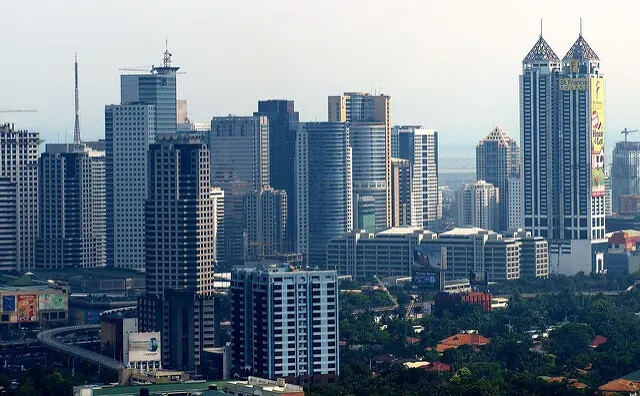
The Philippine economy recorded a lower-than-expected annual growth rate of 5.4% in the first quarter of this year, increasing the likelihood of aggressive interest rate cuts by the Bangko Sentral ng Pilipinas (BSP), the central bank of the Philippines. This sluggish growth is primarily attributed to a decline in net exports and a slowdown in business process outsourcing (BPO) activities. Consequently, ING Group has slightly lowered its 2025 Philippine GDP growth forecast to 5.6% from its previous estimate.
Lower-than-Expected Q1 GDP Growth
The Philippines' first-quarter GDP growth rate stood at 5.4% year-on-year, falling short of both ING Group's forecast and market expectations. While private consumption and government spending showed robust growth ahead of the upcoming midterm elections, this was already anticipated. The disappointing figures were in net exports and investment growth, suggesting that business investment sentiment has been dampened amid the escalating US-China trade tensions and the global trade slowdown.
In particular, net exports had a significant negative impact of -2 percentage points on the first-quarter GDP growth, considerably larger than the average of -0.7 percentage points over the past year. This indicates that the front-loading of exports in anticipation of tariffs was less pronounced in the Philippines compared to other export-driven economies. Additionally, increased imports due to higher government spending ahead of the elections appear to have contributed to the decline in net exports.
Looking at sectoral data, manufacturing showed solid industrial activity with a 4.1% year-on-year growth, which is a positive sign. However, the service sector's growth rate slowed to 6.3% from 6.7% in the previous quarter, mainly due to weaker growth in professional and business services. This implies a deceleration in the growth momentum of the BPO industry, a key pillar of the Philippine economy. As a global BPO hub alongside India, a slowdown in this sector could have a significant impact on the overall economy.
Downward Revision of 2025 GDP Growth Forecast
The Philippine economy is expected to feel the impact of the global economic slowdown more acutely in the future. However, continued support from government spending and monetary policy easing are expected to offset these downward pressures. The Bangko Sentral ng Pilipinas has implemented significant monetary easing since August last year, cutting the benchmark interest rate by 100 basis points and the reserve requirement ratio (RRR) by 450 basis points since September. Bolstered by these measures, bank lending growth surged from 6% in December 2023 to 11% in February 2025.
Furthermore, increased fiscal spending ahead of the midterm elections this month, ongoing infrastructure development initiatives, and lower international oil prices are expected to help cushion the fall in GDP growth resulting from weaker exports. However, reflecting the weak first-quarter GDP growth and the outlook for slower net export growth, ING Group has slightly revised down its 2025 Philippine GDP growth forecast to 5.6%.
Increased Possibility of Further Interest Rate Cuts
Given the recent weaker-than-expected GDP growth and inflation figures, coupled with the downward revision of the growth forecast, the likelihood of the Bangko Sentral ng Pilipinas undertaking aggressive interest rate cuts this year has increased significantly. ING Group maintains its forecast of an additional 75 basis points of benchmark interest rate cuts within 2025.
While the Philippine central bank has previously focused on curbing inflation, the recent signs of easing inflationary pressures and the weaker-than-expected economic growth provide room for a shift in monetary policy towards supporting growth. Generally, interest rate cuts lower borrowing costs, stimulating investment and consumption, thereby driving economic growth. Therefore, if the Bangko Sentral ng Pilipinas implements further interest rate cuts, it could positively impact economic revitalization.
However, concerns remain about potential adverse effects such as capital outflows and a weaker peso due to rapid interest rate cuts. Therefore, the Bangko Sentral ng Pilipinas needs to closely monitor economic conditions and make prudent monetary policy decisions.
In conclusion, the weak first-quarter GDP growth in the Philippines raises concerns about the economic recovery and increases the possibility of further benchmark interest rate cuts by the Bangko Sentral ng Pilipinas. Attention will be focused on future economic indicators and the central bank's monetary policy decisions.
[Copyright (c) Global Economic Times. All Rights Reserved.]






























